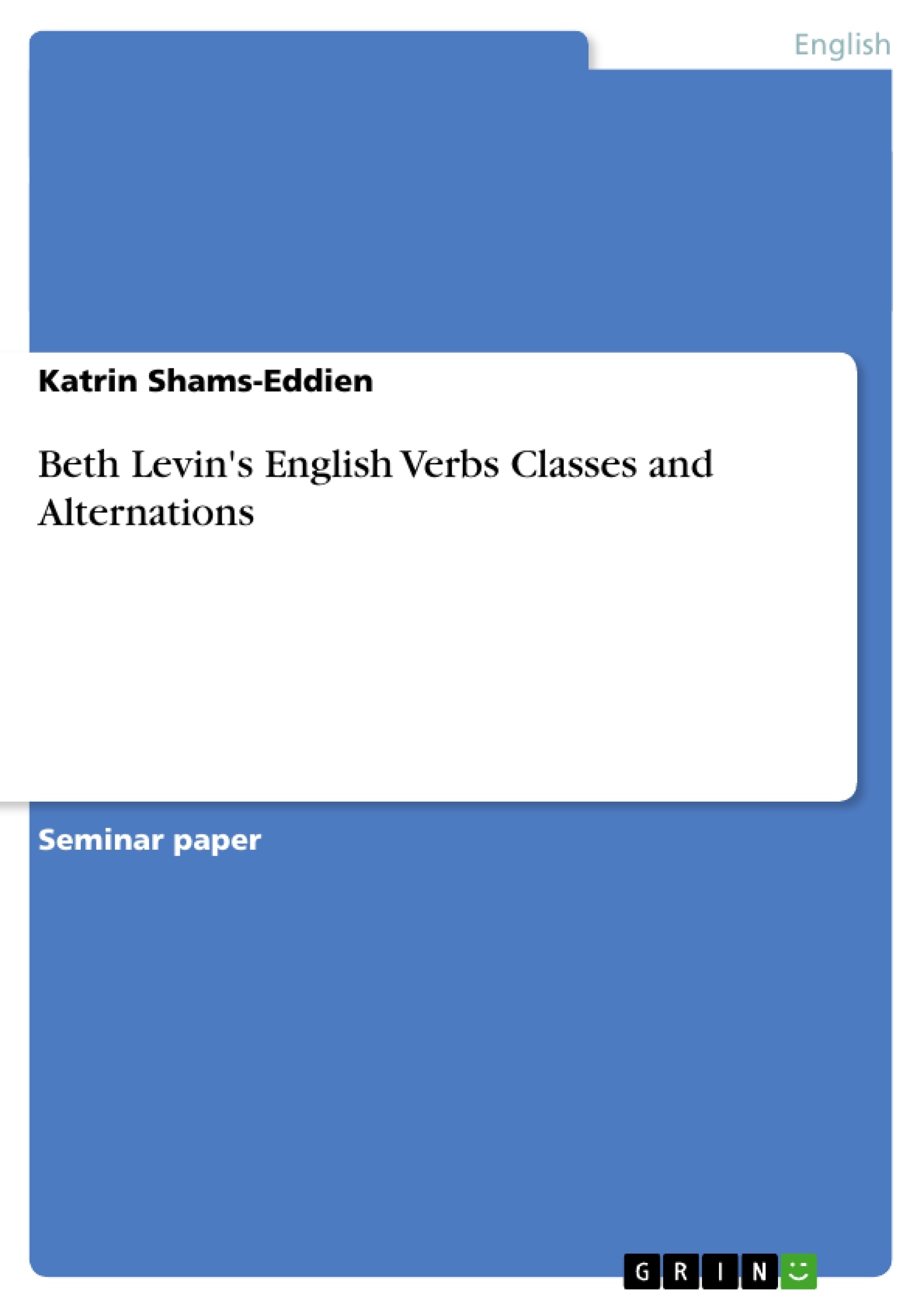[...] “This work is guided by the assumption that the behaviour of verb, particularly
with respect to the expression and interpretation of its arguments, is to a large
extent determined by its meaning.” (Levin 1993)
[Levin tries to develop a system which enables the speaker to determine the
behaviour of a verb by its meaning]
Levin points out that a native speaker is able to make subtle judgements about
the syntactic behaviour of a verb. She hypothesises that it is the meaning of the
verb which enables the speaker to make such judgements about a verb’s
syntactic behaviour. //In particular, the ability of a verb to exist in certain
syntactic frames or constructions (see examples below) is sensitive to certain
components of meaning. The book aims to establish the relevant components of
meaning, and thereby classify the English verbs into classes of shared behaviour
and meaning.
Levin (1993:.. following ... 1987) uses the verb “gally” - a nearly obsolete
whaling term little-known to native speakers - to illustrate this relationship
between a verb’s meaning and its syntactic behaviour. [...]
Inhaltsverzeichnis (Table of Contents)
- Introduction
- The structure of the book
- The syntactic behaviour of a verb and its meaning
- Diathesis Alternations
- Transitivity-altering Alternations
- Understood Body-Part Object Alternation
- Causative/Inchoative Alternation
- Alternations Not Involving a Change in the Transitivity of the Verb
- With/Against Alternation
- Oblique Subject Alternations
- Obligatory Passive
- Summary: Alternations
- Transitivity-altering Alternations
- Verb Classes
Zielsetzung und Themenschwerpunkte (Objectives and Key Themes)
This book aims to analyze the relationship between the meaning of English verbs and their syntactic behaviour. The author, Beth Levin, proposes that a verb's meaning directly influences how it functions in different grammatical constructions. She develops a system for classifying verbs into classes based on their shared semantic features, allowing for predictions about their syntactic behaviour.
- The connection between verb meaning and syntactic behaviour
- Classifying verbs into distinct classes based on their shared meaning
- Analyzing diathesis alternations, particularly transitivity-altering alternations
- Examining the semantic coherence of verb classes
- Exploring how native speakers make judgements about verb behaviour based on their understanding of the verb's meaning
Zusammenfassung der Kapitel (Chapter Summaries)
The book begins by outlining its structure and introducing the central thesis: that verb meaning is a crucial determinant of syntactic behaviour. It provides a detailed discussion of diathesis alternations, which are variations in the way arguments are expressed, often accompanied by changes in meaning. These include transitivity-altering alternations, such as the Causative/Inchoative Alternation and the Understood Body-Part Object Alternation, which demonstrate how verbs can shift between transitive and intransitive forms. The book also explores other diathesis alternations not involving transitivity changes, such as the With/Against Alternation. The author provides a comprehensive overview of these alternations, showing how they can be used to identify distinct verb classes based on shared semantic features.
Schlüsselwörter (Keywords)
The main keywords and focus topics of the text include verb meaning, syntactic behaviour, diathesis alternations, transitivity, verb classes, semantic coherence, native speaker intuition, and the relationship between grammar and meaning.
- Quote paper
- Katrin Shams-Eddien (Author), 2002, Beth Levin's English Verbs Classes and Alternations, Munich, GRIN Verlag, https://www.hausarbeiten.de/document/11101


